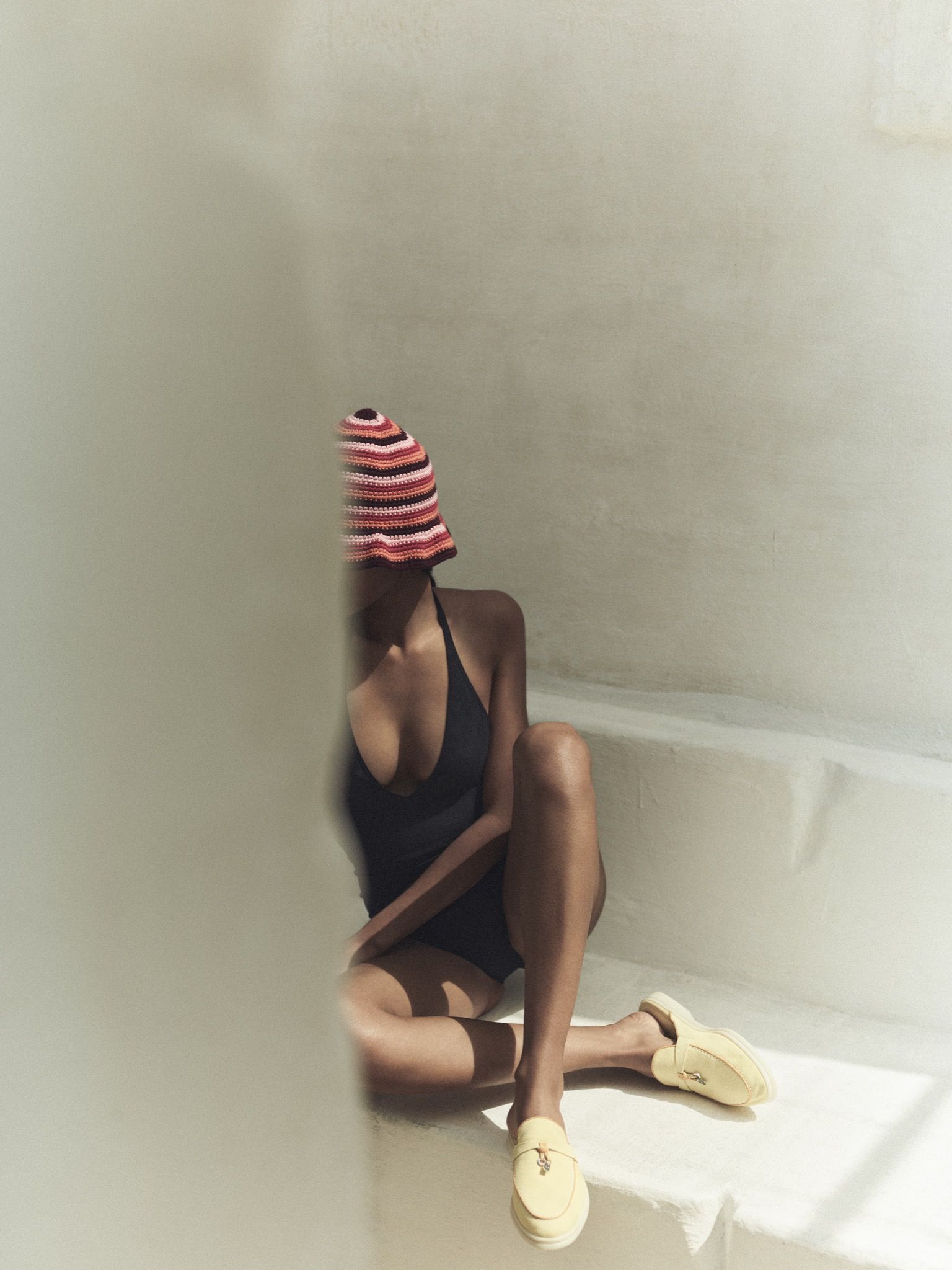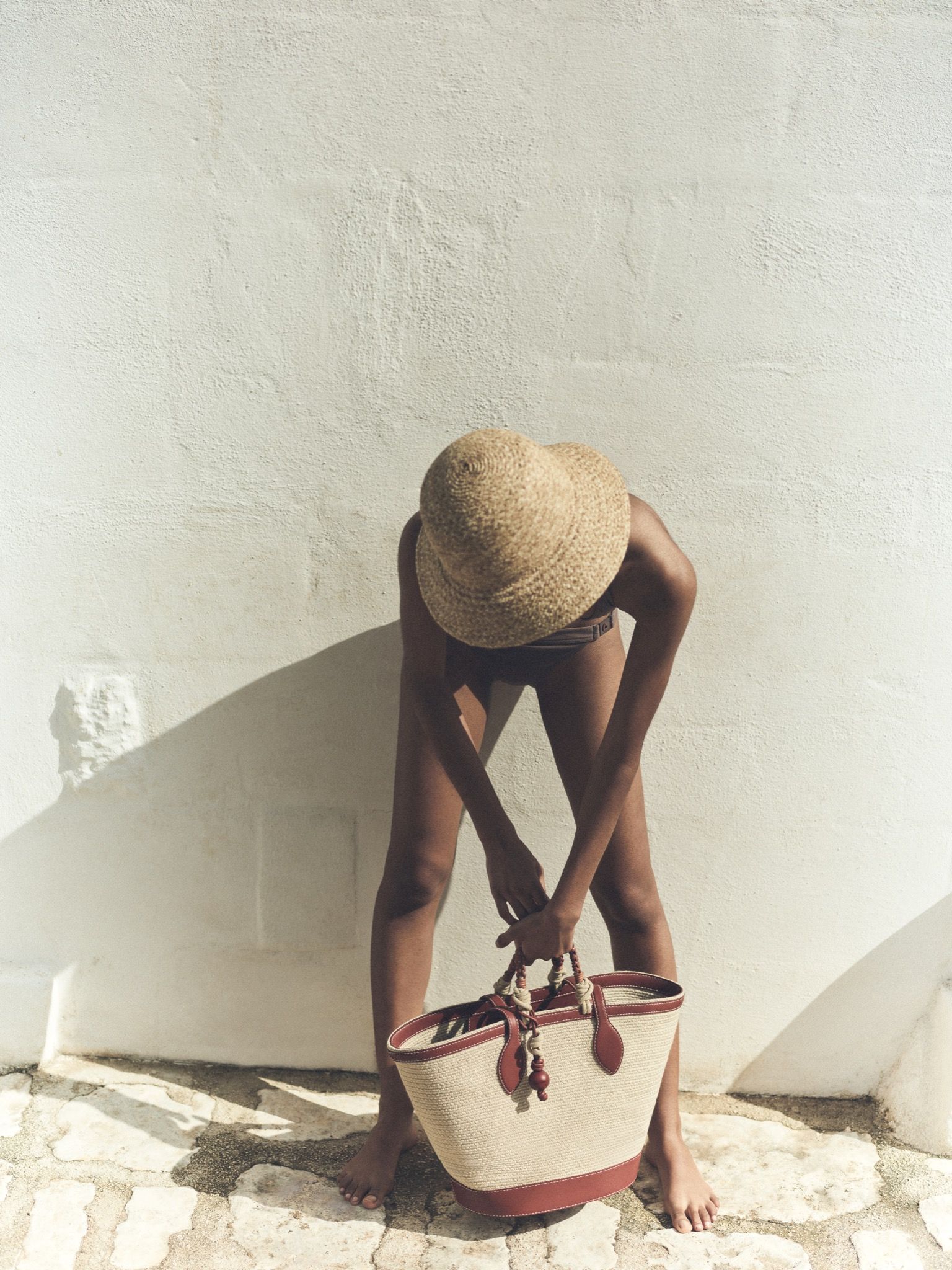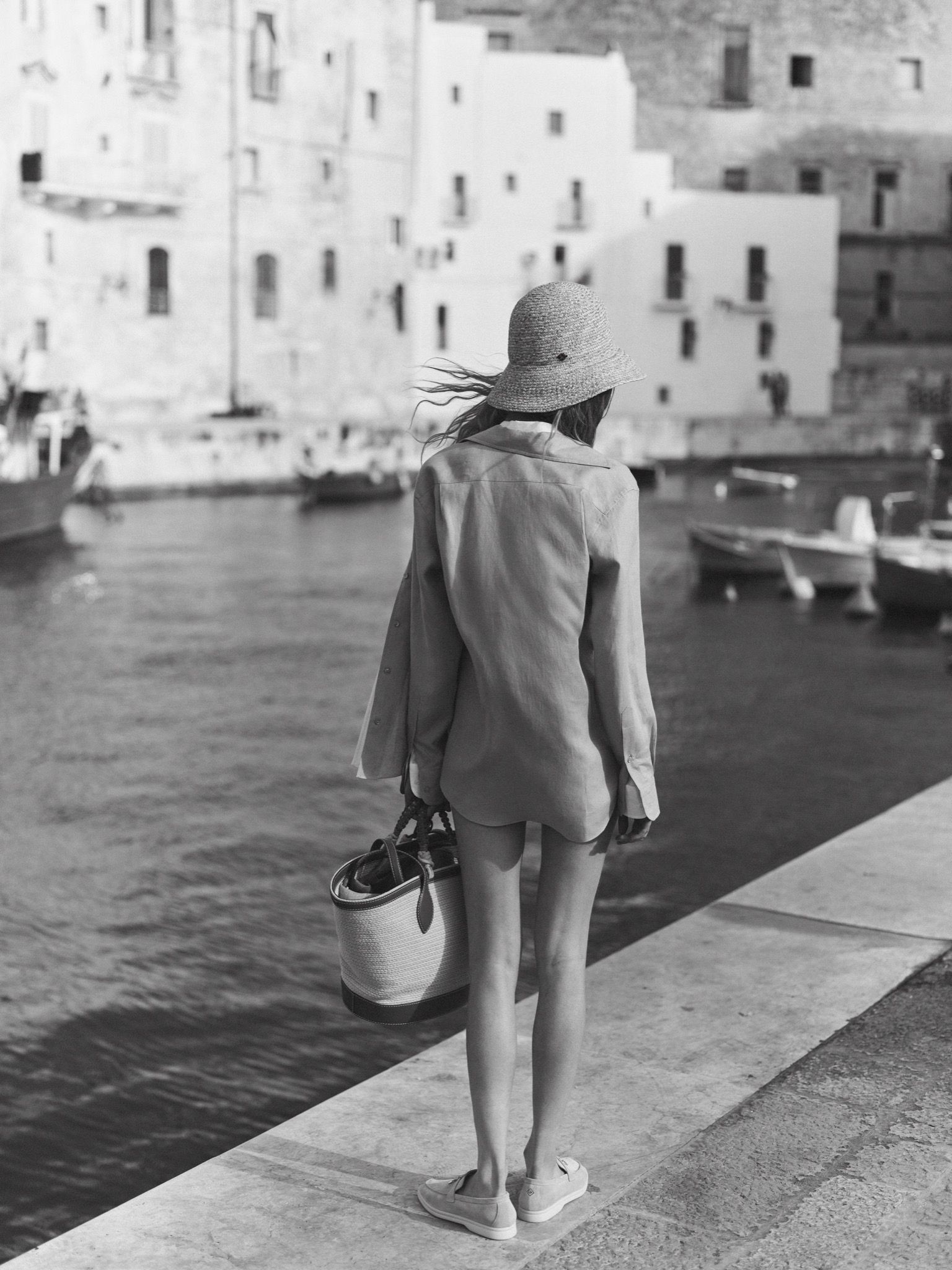LA DOLCE VITA: “Can Such Things Be?”
La Dolce Vita is a leitmotif explored in the LORO PIANA summer 2022 wardrobe, enhanced for seekers of carefree moments and the pleasures of small things. Italian for "the sweet life," la dolce vita is an idea rooted deeply in the literature and film of Italy, giving language to the ineffable aesthetic and emotion we attempt to communicate when we say, "the Mediterranean."

In mineralogy, “sweet” – sweet crude oil, sweet soil – means free from excessive unwanted substances such as acid or sulphur. Elsewhere – in butter, in water – it can mean free of salt. When Dante wrote of “the experience of this sweet life” (“L’esperienza di questa dolce vità”) in the Paradiso – the last book of the Divine Comedy, in which the protagonist reaches heaven – he was writing of a life free of vice. But la dolce vita as we have come to know it is a life laden with acidic substances – one of absinthe and wine flowing in Riviera-side revelry. It is as salty as the Mediterranean and the foods one consumes beside it, and it is anything but restrictive.
Federico Fellini’s 1960 La dolce vita, often credited with the expression, is an homage to the Italian bard, one set not in Dante’s paradise but in something more like his Inferno. The film’s opening scenes show a statue of Jesus strapped to a helicopter, flying over the ancient aqueducts of a Rome – a religious icon above a city of excess and insouciance, buoyed of the Italian “economic miracle” of the late 1950s. La dolce vita was so popular and polarizing that its title became synonymous with Italy itself, and in the eyes of the world the country became a place of physical pleasures: a Garden of Eden accessed not through purity, as Dante’s pilgrim accesses his, but through luxury; a realm of YOLO-gized consumption and material freedom – not of things “free from.”


The “sweet life,” as capricious and personal in its perception as sweetness itself, contains its own counterpart. So does Dante’s original formulation: “the experience / of this sweet life and its opposite.” Later, in the same Canto of the Paradiso, the poet contemplates the “eternal pleasure” of this divine universe, questioning the possibility of it all: “Can such things be?” A sacred eagle responds, telling Dante that “the incompleteness of our knowledge is / a sweetness” – that we must accept the limitations of human understanding and enjoy the idea that there are things that will forever exist outside our comprehension. Even in the loftiest spheres of Dante’s heaven, the sweet life is sought and described in the same terms as it is in Fellini’s decadent postwar Rome – of pleasure and passion, “fire” and “festivity,” love and desire.
There is another Garden of Eden on the Mediterranean, and it is Ernest Hemingway’s. His last novel perfects the dolce-vita-as-Rivieran-bacchanale, embodied first by a young man and woman celebrating their honeymoon with boiled eggs and chilled white wine in the morning, skinny dips on remote beaches, constant lovemaking and near-constant room service; then by their introduction of a mutual lover. The sweet life is the bittersweetness of the love triangle; it is the couple’s tender and shattering evolution and alienation. La dolce vita, to repurpose Dante’s words again, is the generosity of sending “ardent love and living hope” into the world when you don’t know with any certainty what will come back. Often, what la dolce vita returns with is an invitation – to a Ligurian villa, to a luncheon on a yacht – an offer of the type of adventure that entices you to other ones, mysteriously and ad infinitum.


In Romeo and Juliet, a rose – no matter what you call it – is sweet. So is the sorrow of parting. Lovers’ tongues by night sound “silver-sweet,” says Romeo, whose trespass is “sweetly” urged by Juliet. To rest is sweet. The milk of adversity – philosophy – is sweet. Love “itself possessed” is sweet. In English idioms: revenge is sweet, the hereafter is sweet, forbidden fruit is the sweetest fruit; talk and home and the smell of success are sweet, life itself is sweet and so is time (when you’re taking yours). To live a sweet life is to seek delight amid the uncertainty and unknowability of experience, joy in the spaces between floating meanings and perceived contradictions – big or small, moored or adrift, celestial or mundane. The sweet life can be anything, which somehow makes the complicated thing of sweetness simple.
In Hemingway, life is lived sweetly when you can say “everything is right until it’s wrong,” or “everything that’s innocent to us is crazy to them.” In Fellini, the sweet life is “a state of enchantment … to succeed in loving so greatly that we live outside of time.” At Loro Piana, La Dolce Vita is “filled with discoveries,” “a mood and a metaphysical space, enchanting and timeless.” La Dolce Vita “seems to glide over the body,” like the summer cashmeres and button-up shirting they wear beachside in Garden of Eden, “offering a sense of the freedom of summer days on the sea.”


See more of Loro Piana’s summer 2022 season, which includes the new Eolian Basket and the brand's debut women’s swimwear line, at loropiana.com.
